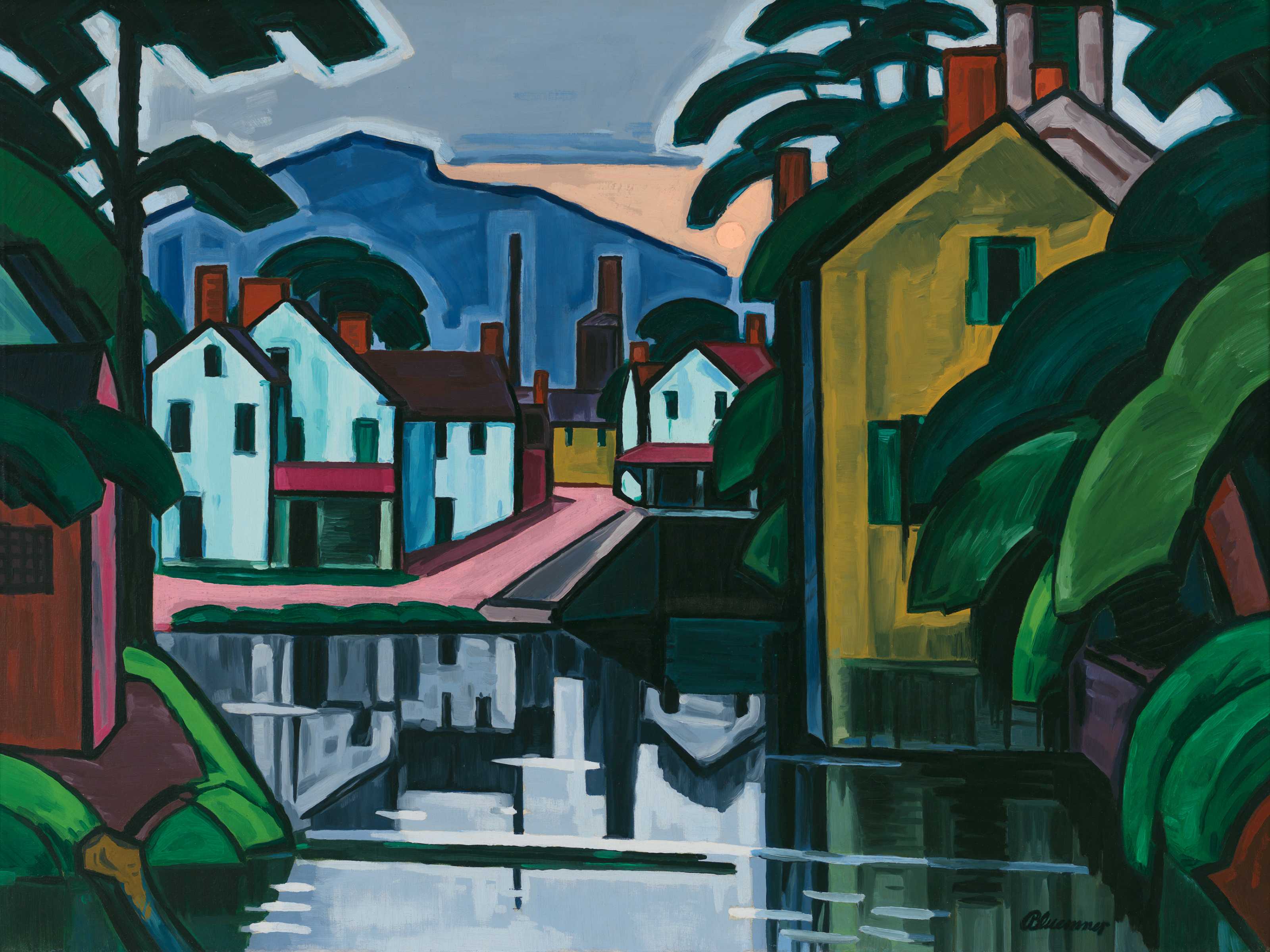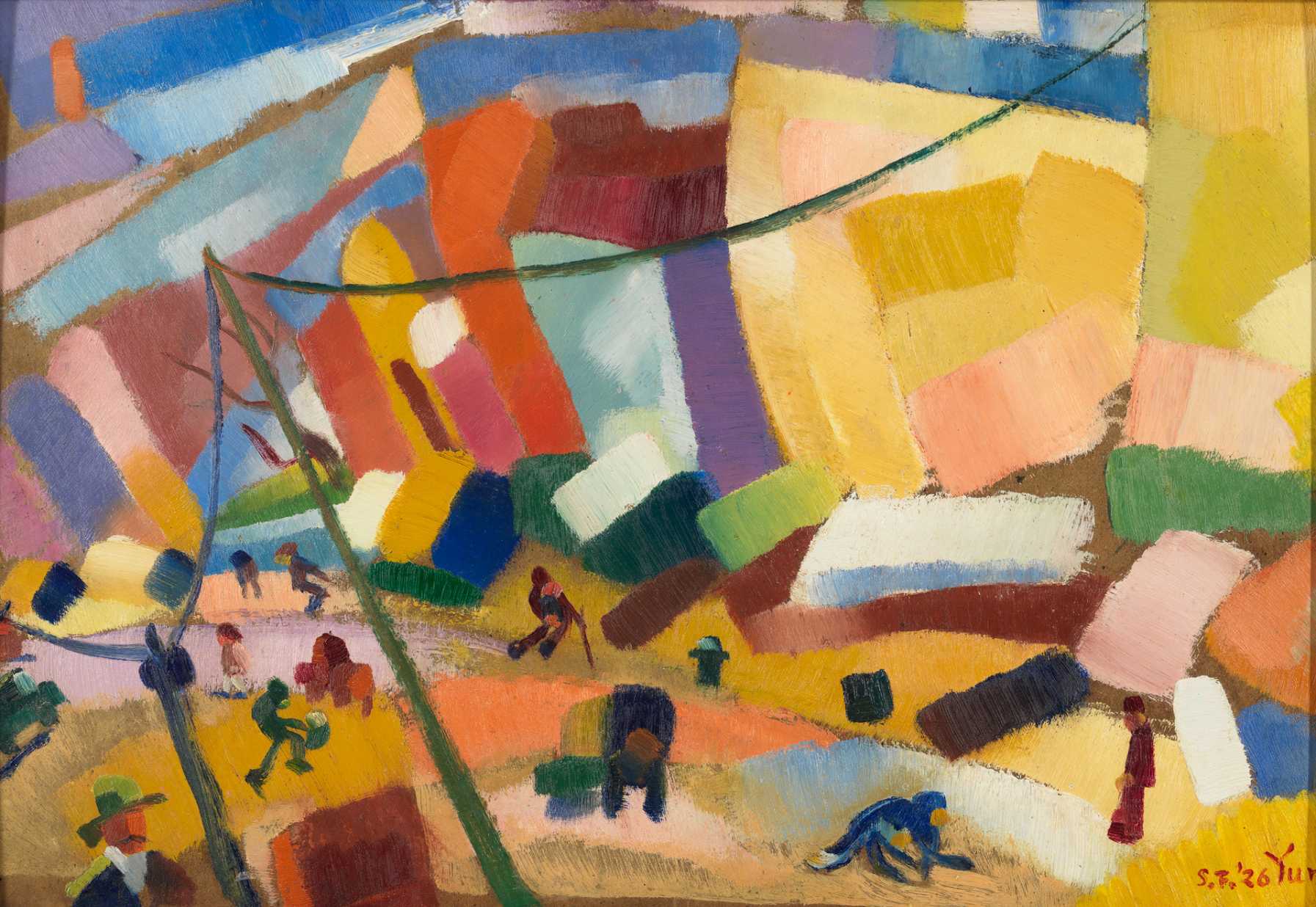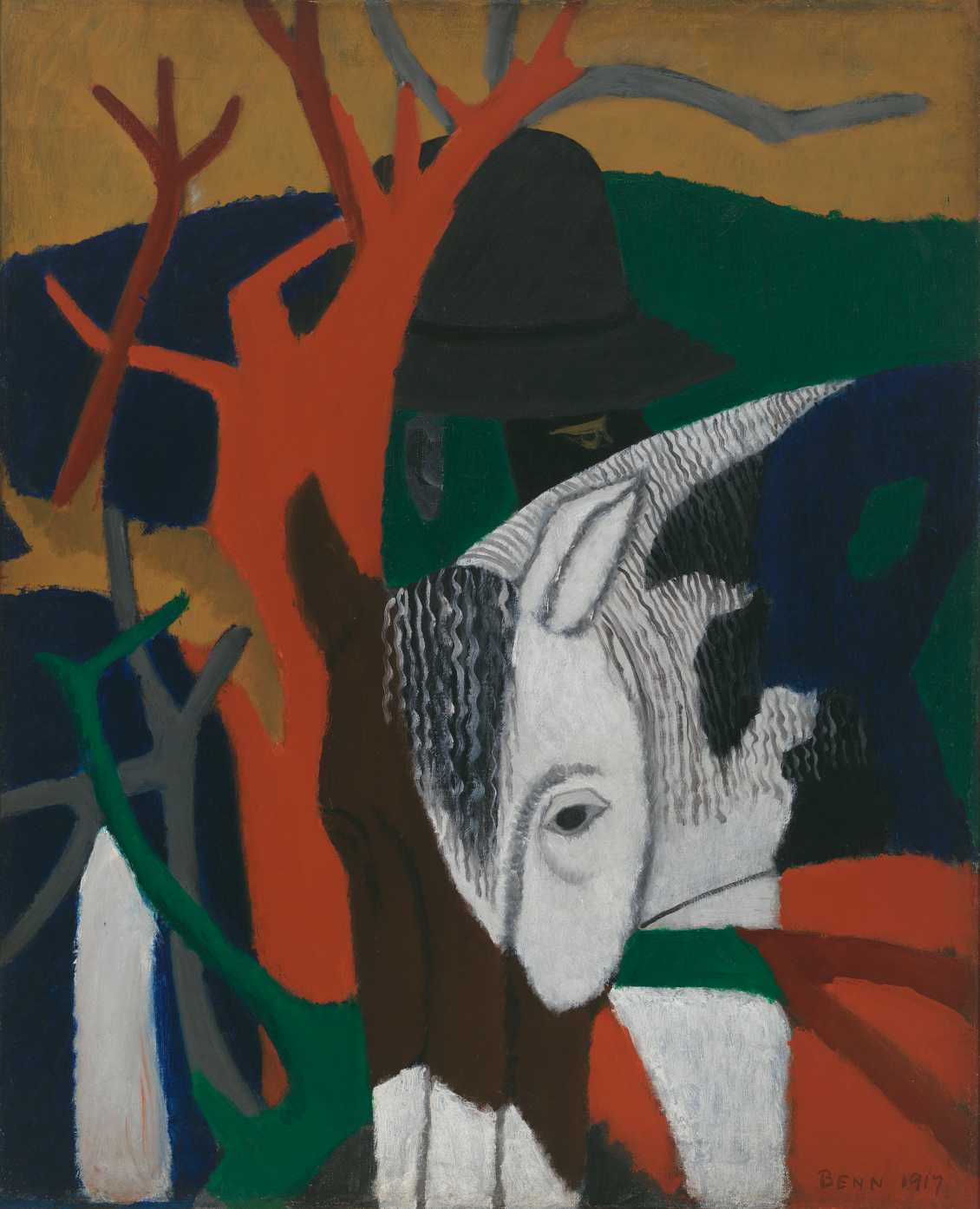At the Dawn of a New Age: Early Twentieth-Century American Modernism

Oscar Bluemner (American, born Germany, 1867-1938), "Old Canal Port," 1914. Oil on canvas. Whitney Museum of Art, New York; gift of Gertrude Vanderbilt Whitney 31.114
Forty years of American Modernism will be on view at the Norton beginning March 18th with two exhibitions, At the Dawn of a New Age: Early Twentieth-Century American Modernism and From Man Ray to O'Keeffe, American Modernism at the Norton.
At the Dawn of a New Age: Early Twentieth-Century American Modernism explores the myriad ways artists employed abstract styles to convey their experiences of modern life. Drawn from the major collection of this material held by the Whitney Museum of American Art, the exhibition brings together works produced between 1900 and 1930 by both well-known American modernists and their less familiar, but equally groundbreaking, peers.
Early modernists in the United States came of age during a period of great optimism about the country’s progress and innovation. Nowhere else were cities so illuminated, manufacturing processes so efficient, or new forms of communication and transportation so pervasive. The women’s suffrage movement and other progressive initiatives heralded cultural shifts by challenging existing social and economic norms. Against this backdrop, many American artists adopted the new and experimental over the traditional and fixed by rejecting realism in favor of art that gave precedence to emotional experience and harmonious design.
The Whitney Museum largely ignored the work of America’s early modernists at the start of its history; its loyalty was to the urban realists who formed the core of the Whitney Studio Club, out of which the Museum had grown. While the Museum acquired a handful of nonrepresentational works when it was founded in 1930 and more were added in subsequent decades, it was not until the mid-1970s that the Whitney began to vigorously acquire vanguard art made between 1900 and 1930. Even then, these acquisitions largely excluded work by women and artists of color. At the Dawn of a New Age provides an opportunity to address some of these omissions. The result is an exhibition that expands the understanding of early twentieth-century American modernism and the mood of optimism that informed it.

Yun Gee (American, born China, 1906-1963), Street Scene, 1926

Ben Benn (American, born Russia, 1884-1983), Cowboy and Horse, 1917

Oscar Bluemner (American, born Germany, 1867-1938), Old Canal Port, 1914

Agnes Pelton (American, born Germany, 1881-1961), Ahmi in Egypt, 1931

Marsden Hartley (American, 1877-1943), Forms Abstracted, 1914-1915

Florine Stettheimer (American, 1871-1944), Sun, 1931

Georgia O'Keeffe (American, 1887-1986), Abstraction, 1926

William Zorach (American, born Lithuania, 1887-1966), Woods in Autumn, 1913

Albert Bloch (American, 1882-1961), Mountain, 1916

Marsden Hartley (American, 1877-1943), Painting, Number 5, 1914-1915

Patrick Henry Bruce (American, 1881-1936), Painting, circa 1921-1922

Henrietta Shore (Canadian, active United States, 1880-1963), Trail of Life, circa 1923

Georgia O'Keeffe (American, 1887-1986), Music, Pink and Blue No. 2, 1918

Georgia O'Keeffe (American, 1887-1986), Flower Abstraction, 1924

Georgia O'Keeffe (American, 1887-1986), Black and White, 1930
This exhibition was organized by the Whitney Museum of American Art, New York.
Major support for this exhibition at the Norton was provided by The Cornelia T. Bailey Foundation, with additional support provided by The Mr. and Mrs. Hamish Maxwell Exhibition Endowment, Mr. and Mrs. Thomas McWilliams, and The Sydelle and Arthur I. Meyer Endowment Fund.